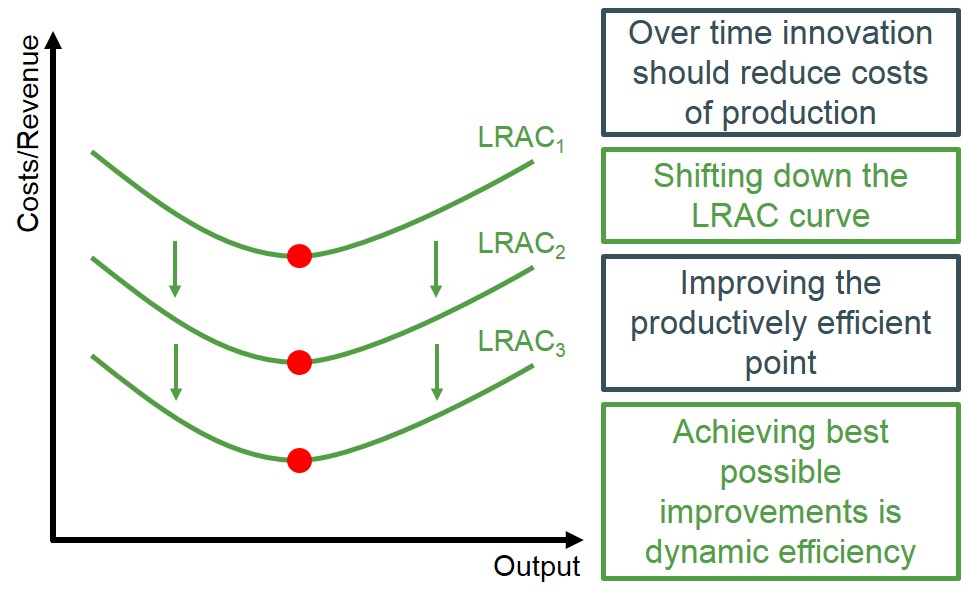When a firm achieves productive efficiency over a sustained period of time.
Graphically this can be represented by the firms long-run average costs curves falling over time. This is achieved by the firm inventing and innovating new products and more importantly better and more efficient production processes. This type of efficiency will see both the short-run and long-run average cost curves fall over time.
